Skellig Michael is one of the most extraordinary places I have ever been. Situated roughly 13 km off the coast of Kerry in Ireland in the Atlantic Ocean. It stands with Little Skellig, which is a thriving bird habitat.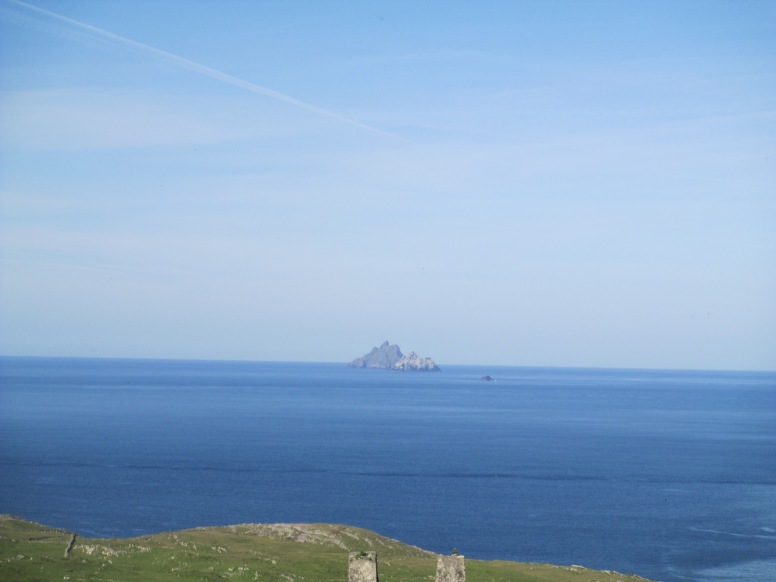
Skellig Michael and Little Skellig, Skellig Michael is in the back.
Skellig Michael.
Although from the photos both Skellig Michael and Little Skellig might seem to be simply harsh lumps of rock in the middle of the ocean, this is far from the truth. Skellig Michael has a fascinating history of habitation, and the most spectacular monastery I have ever seen is situated on its seemingly impassable slopes.
The history begins with the first known mention of Skellig in 1400 BCE when legend has it that Milesius, an early invader of Ireland, lost one of his sons, Irr, to Skellig’s cliffs. There is also legend of Skellig being a refuge for Duagh King of Munster when he fled for his life in the 5th century.
The most interesting aspect of the history of Skellig is its monastery.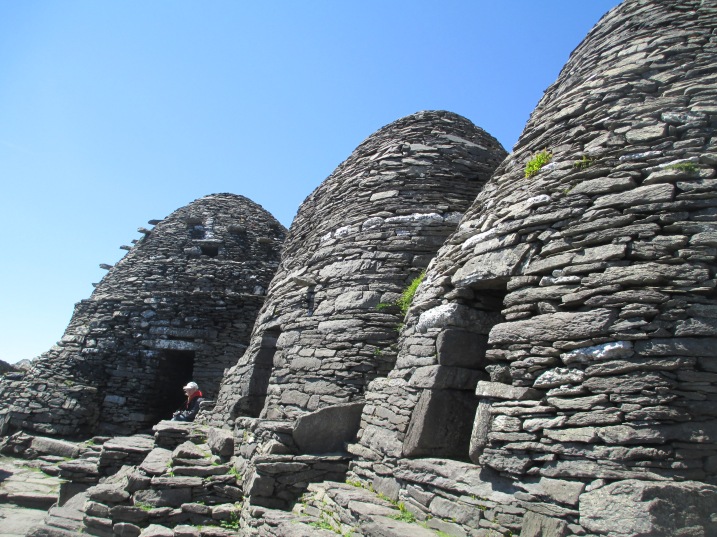
Beehive huts Skellig Michael monastery.
There is debate over when the monastery was first founded, but it was part of the early Christian monks’ attempts to find sanctuary, refuge, seclusion and closeness with God in distant and remote places. As a rock in the Atlantic, Skellig is about as remote as it gets.
The monastery was probably founded in around the sixth century, no one is entirely sure and I have been unable to find any real agreement on this date. It consists of a collection of drystone beehive huts that are as weathertight today as they would have been when they were built. The integrity of the construction is truly remarkable.
The beehive huts.
They would have been inhabited by a community of 12 monks and an Abbot. The conditions would have been harsh to say the least. We know they had fresh water because a rainwater collection system still exists, and works as well when it’s been cleaned out, but beyond that we don’t know much about their day to day existence. They would have lived and eaten very simply.
The monastery, including the Oratory on the left and a high cross and the graveyard.
The most important building for the monks was the Oratory, here prayers would have been said over a simple altar which no longer survives.
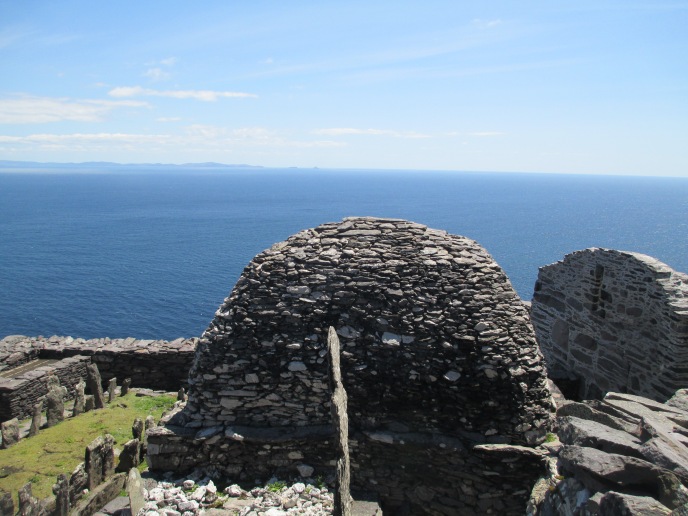
The Oratory.
If the community of 12 on Skellig Michael was not remote enough then there was also a hermitage built high on another point of the rock, it’s almost a sheer cliff so currently inaccessible. It is possible that this was also a refuge during viking attacks of which there were several.
The first was in c. 795 CE. They were attacked again in 812 CE and again in 823 CE. Some records of this third attack remain beyond the fact that it occurred. It is recorded in the Annals of Ulster and the Annals of Inishfallen that this time the Vikings took Etgal, the Abbott of Skellig Michael, and they starved him to death. There were also further attacks in 833 CE and 839 CE.
Somehow despite all this the Skellig community survived. It isn’t known exactly when monks ceased to live on the rock, but Gerald of Wales reported that they returned to the mainland to become part of the Augustinian priory in Ballinskelligs at the end of the 12th century, however other sources report that there was still repair work going on into the 1300s.
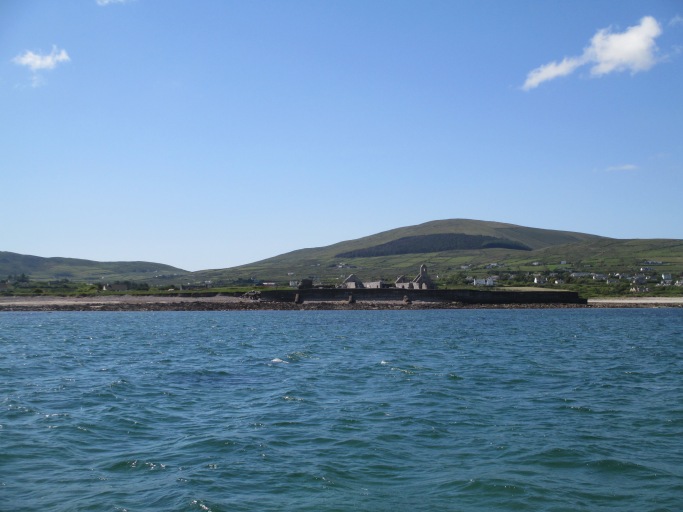
Ballinskellings Abbey from the water.
Human habitation did continue on Skellig with the construction of two lighthouses in the 1800s, one of which is still in use today. The remaining light is automated rather than having a lighthouse keeper.
Skellig Lighthouse
The monastery can still be visited today, though numbers are strictly limited. Once you arrive at the the rock the monastery is reached by awe inspiring, though very daunting, steps which would not be that different to the way the monks ascended.
There are 640 sheer steps and it is a hard walk, but the monastery is absolutely worth it and if you are lucky the resident puffins will be out.
Skellig Michael has been a site of pilgrimage for centuries, a place of penance for some, a holy place for others, a spiritual place for more and for many a rock with a truly fascinating history. I fall into this final category, but no matter your reason for going it is truly one of most remarkable places in the world.
References: The Skellig Story Des Lavelle
ISBN: 9780862788827
The photos are all mine

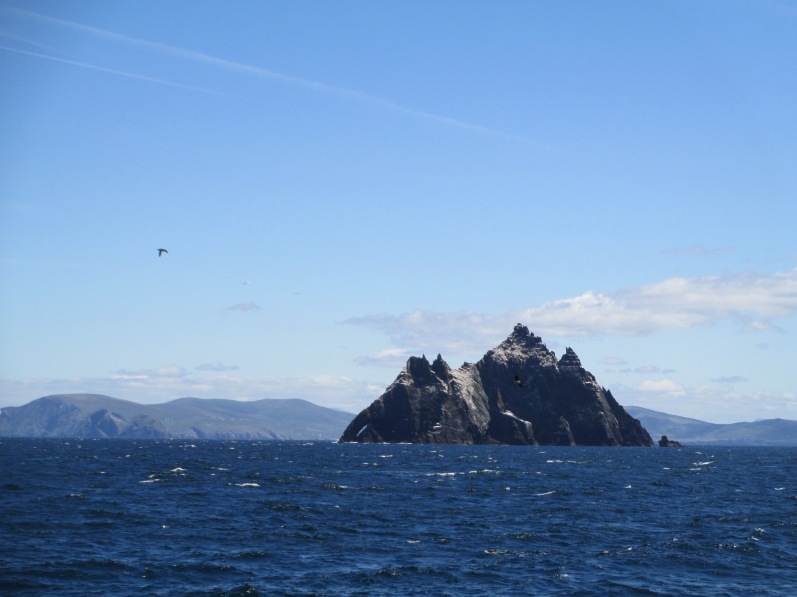
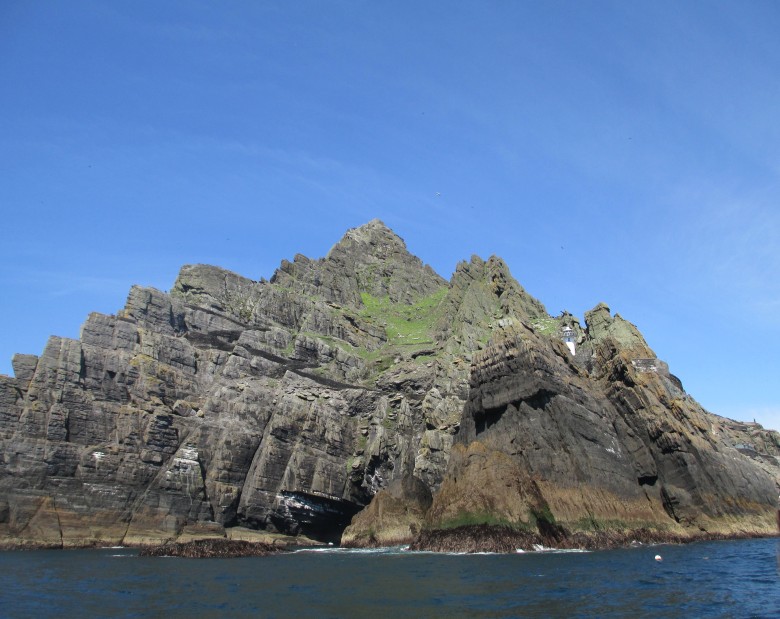
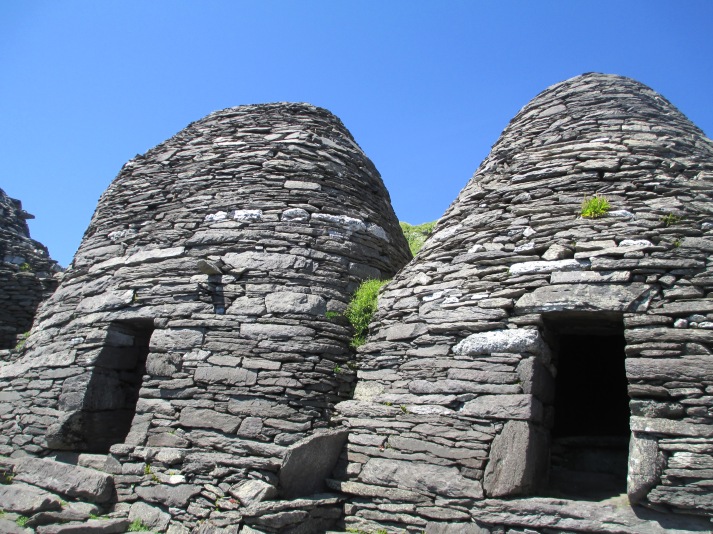
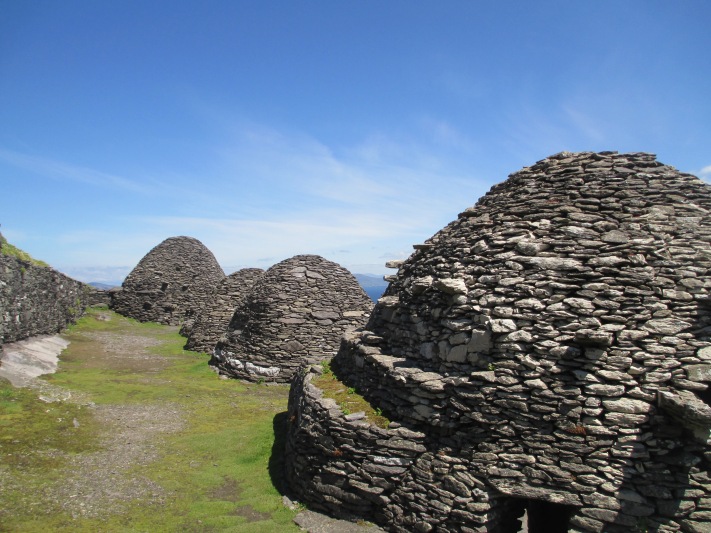
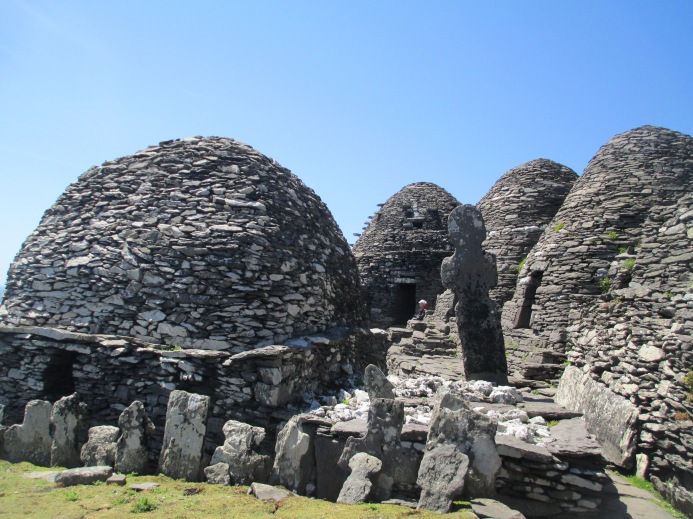
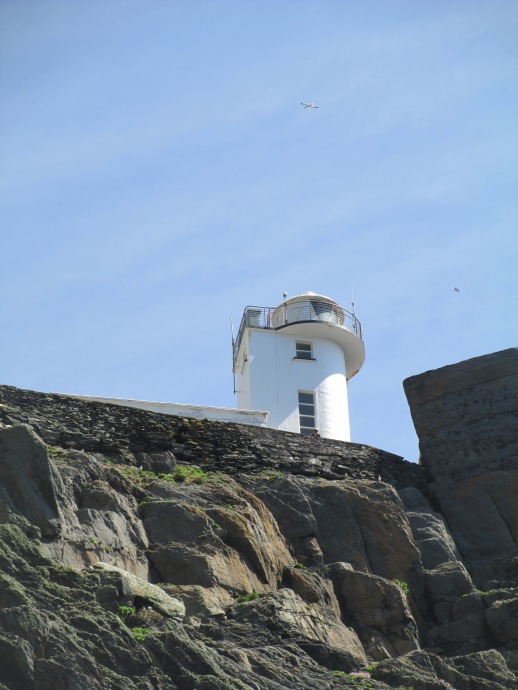
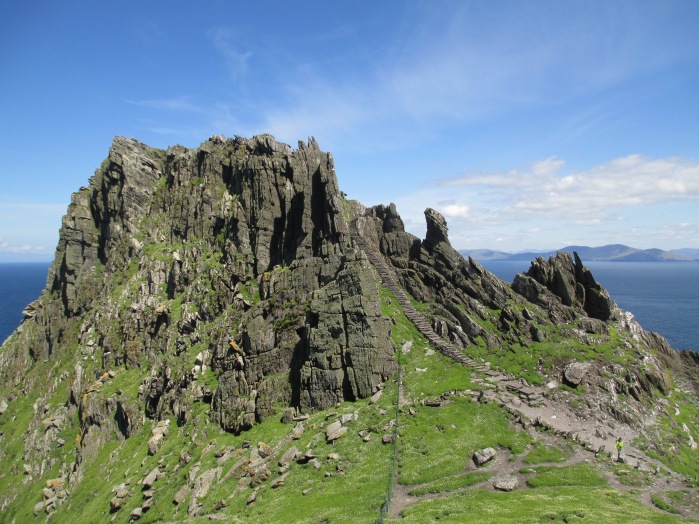
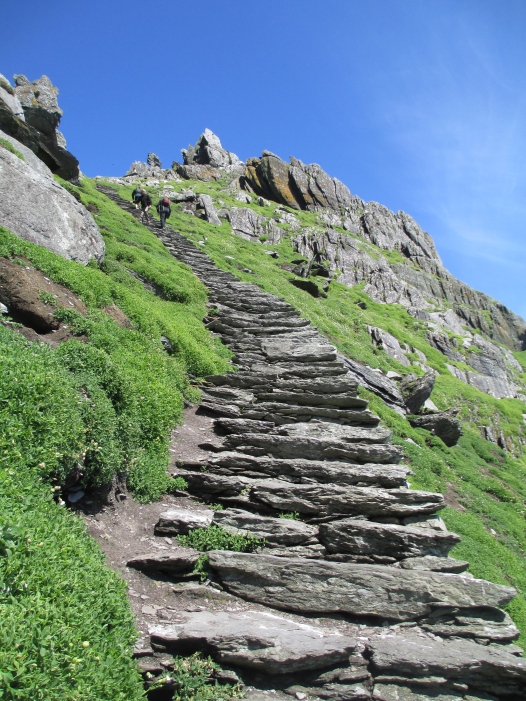
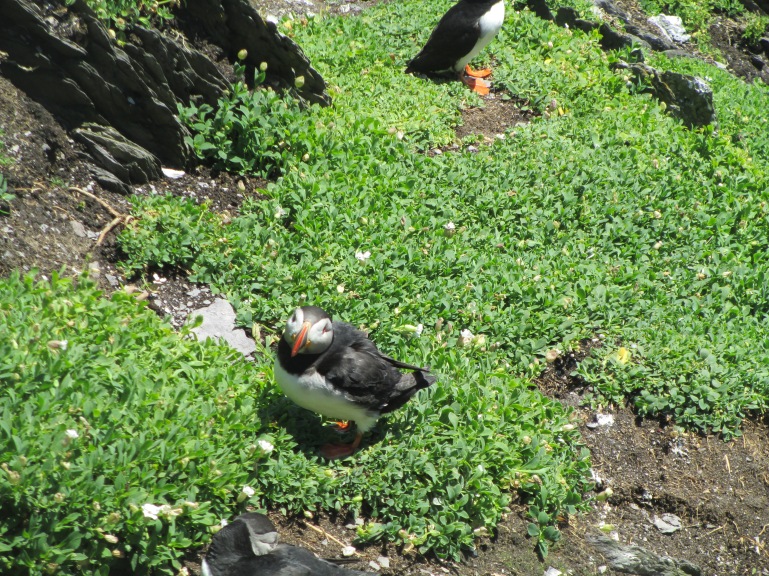
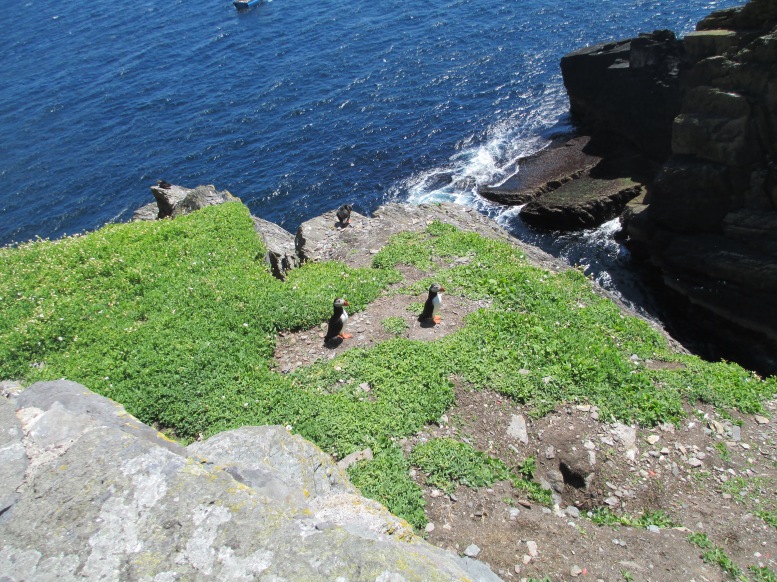
What a truly extraordinary place! I would love to visit one day. And what a lovely bonus to see the puffins!
LikeLike
Yes Caroline, it is really amazing and the puffins were a lovely bonus. So was the weather.
LikeLiked by 1 person
Reblogged this on Suze.se.
LikeLike
Fabulous!
LikeLike
Thanks
LikeLike